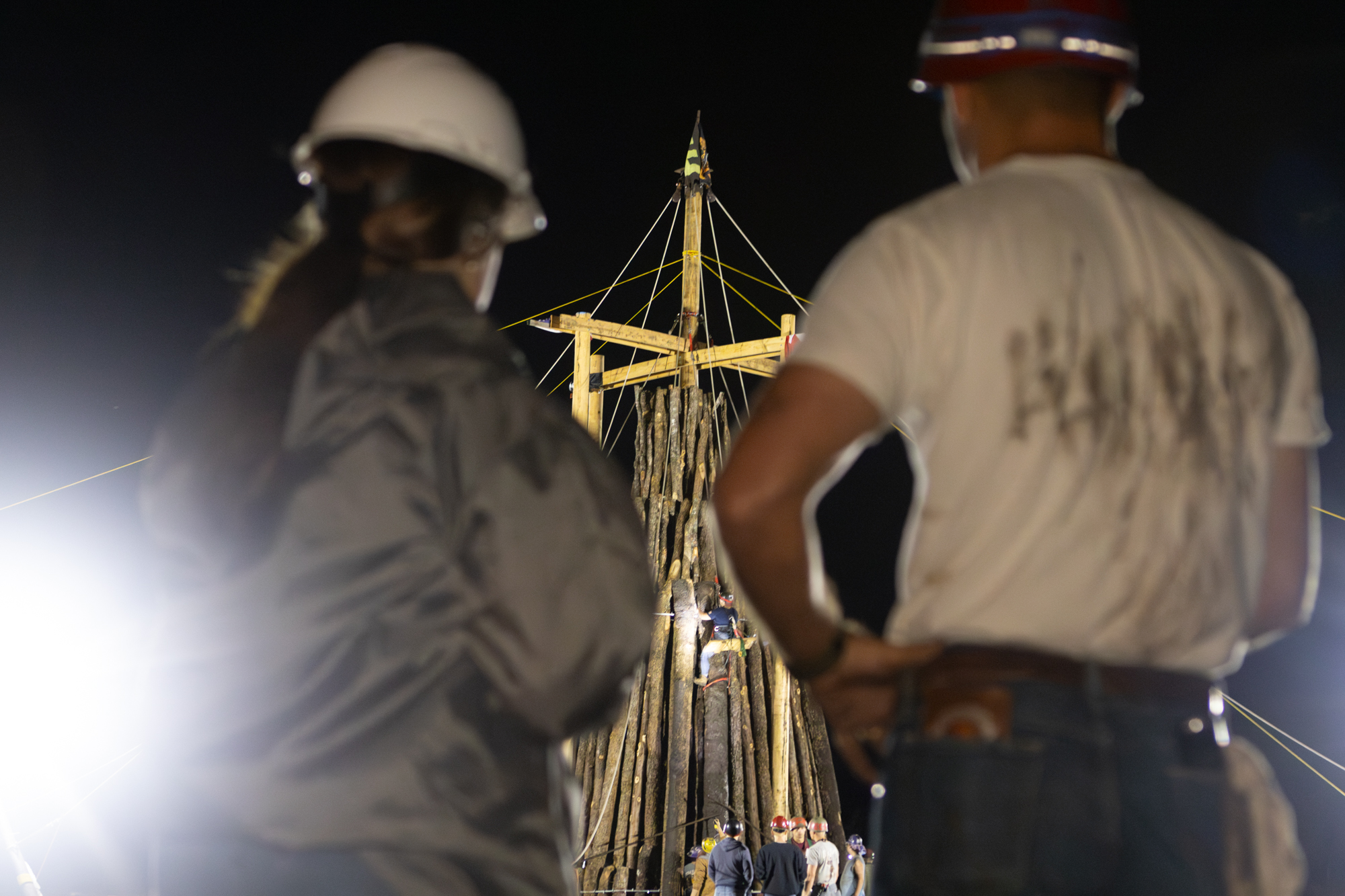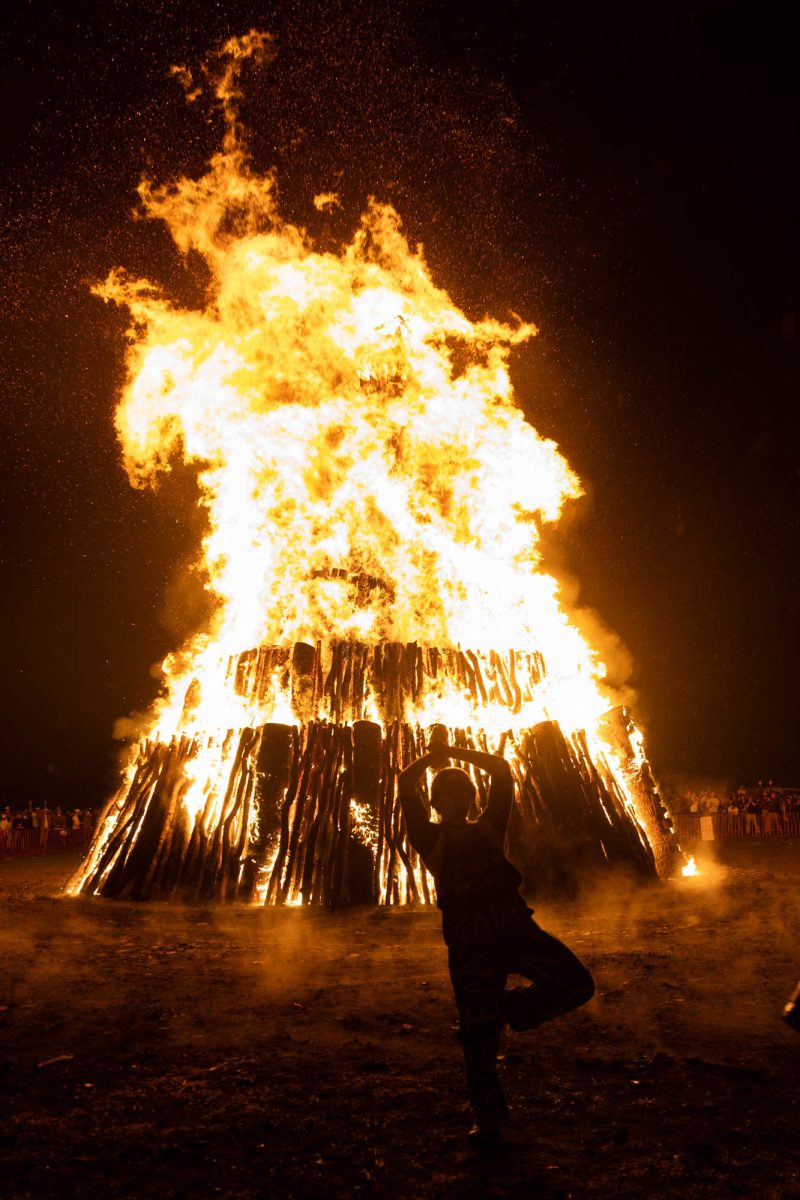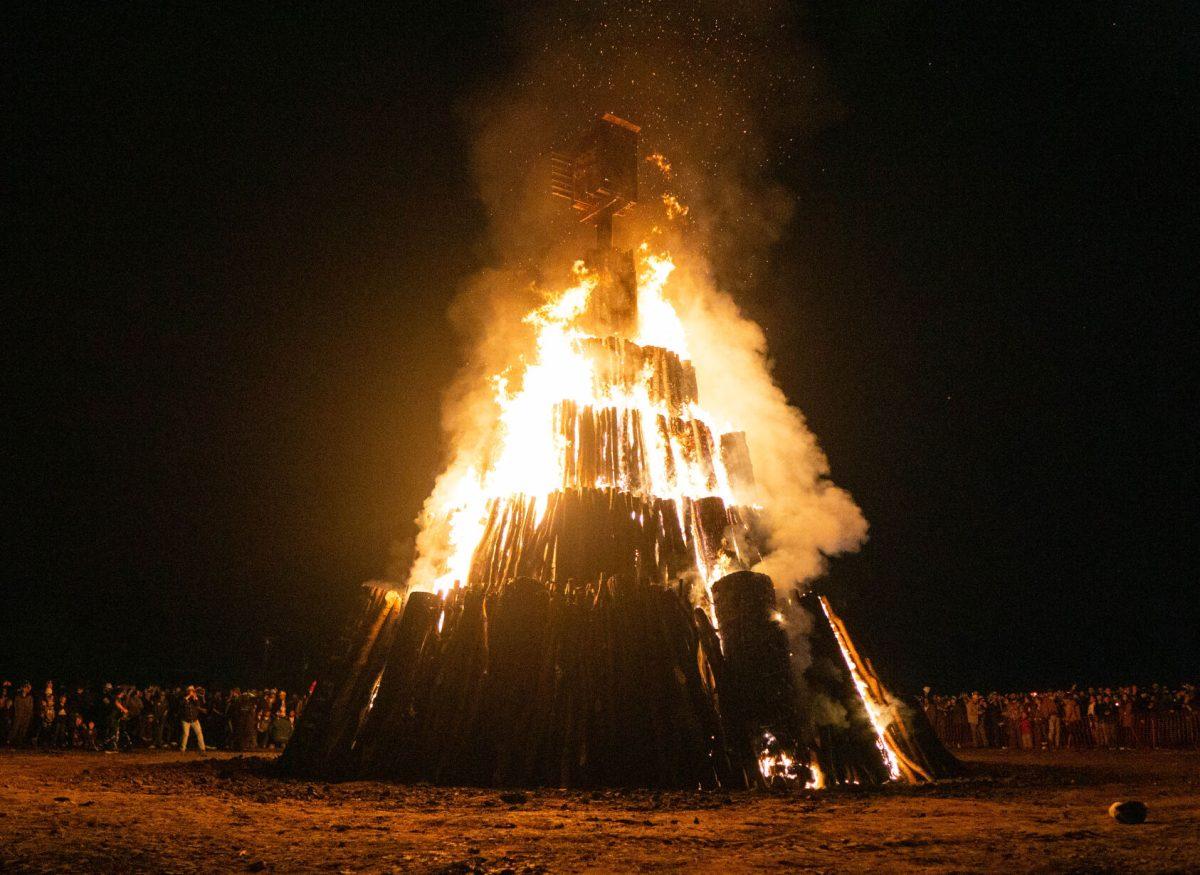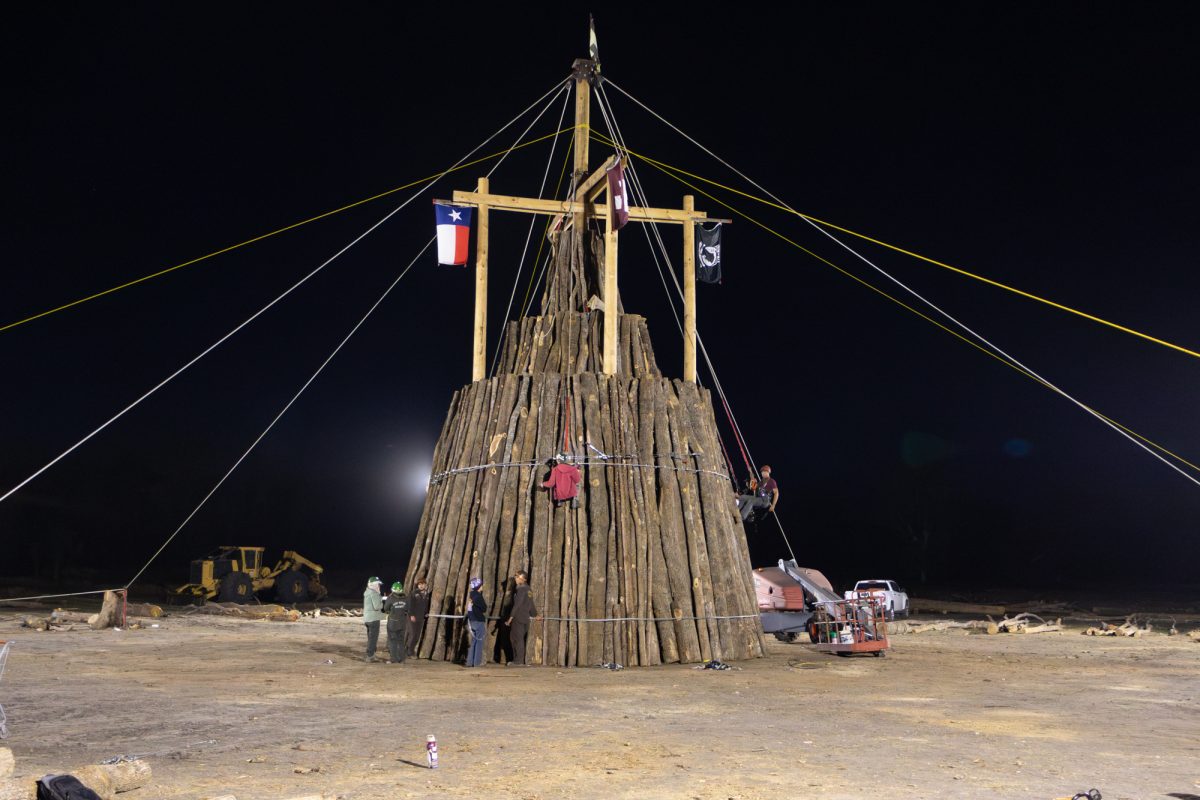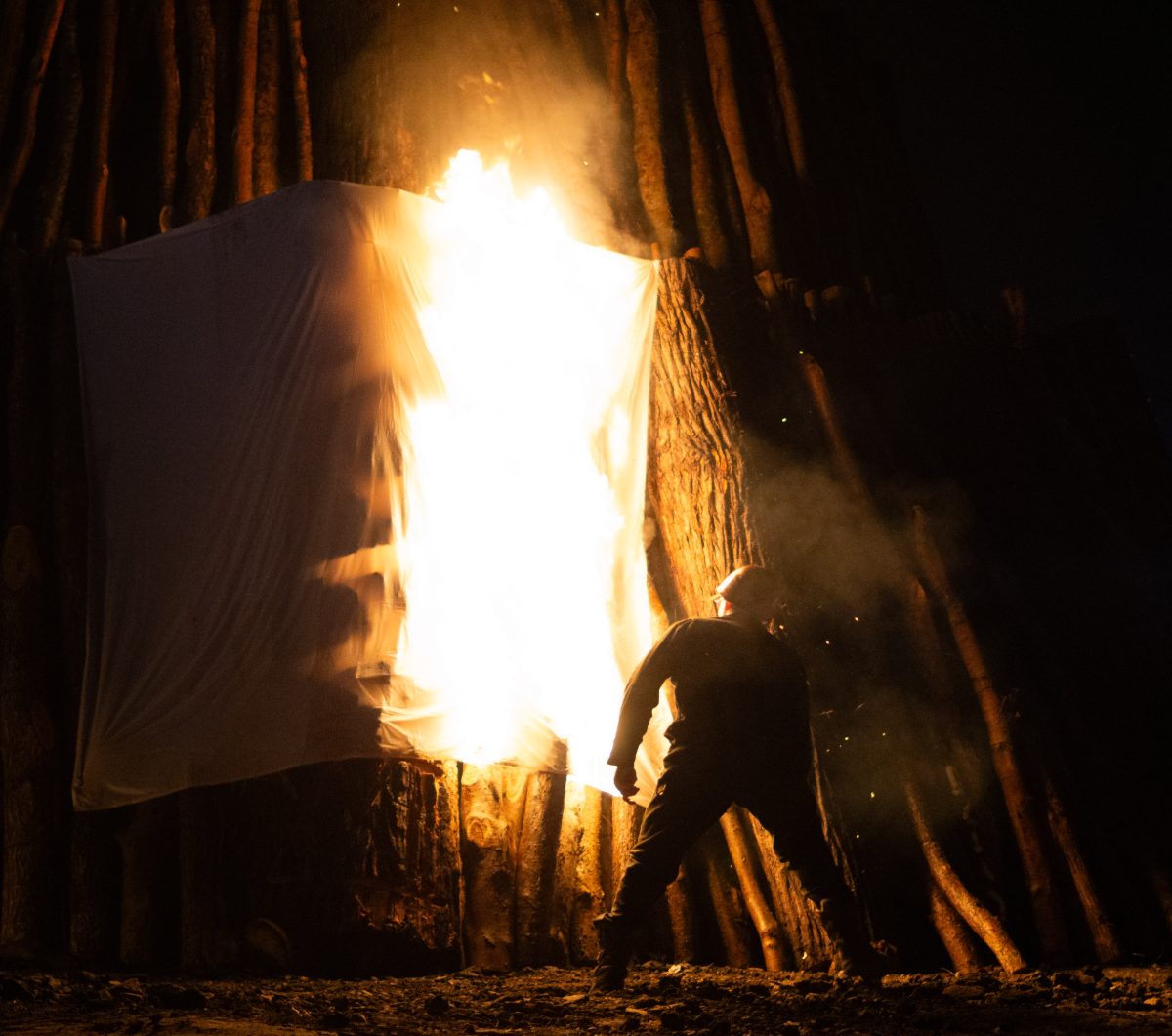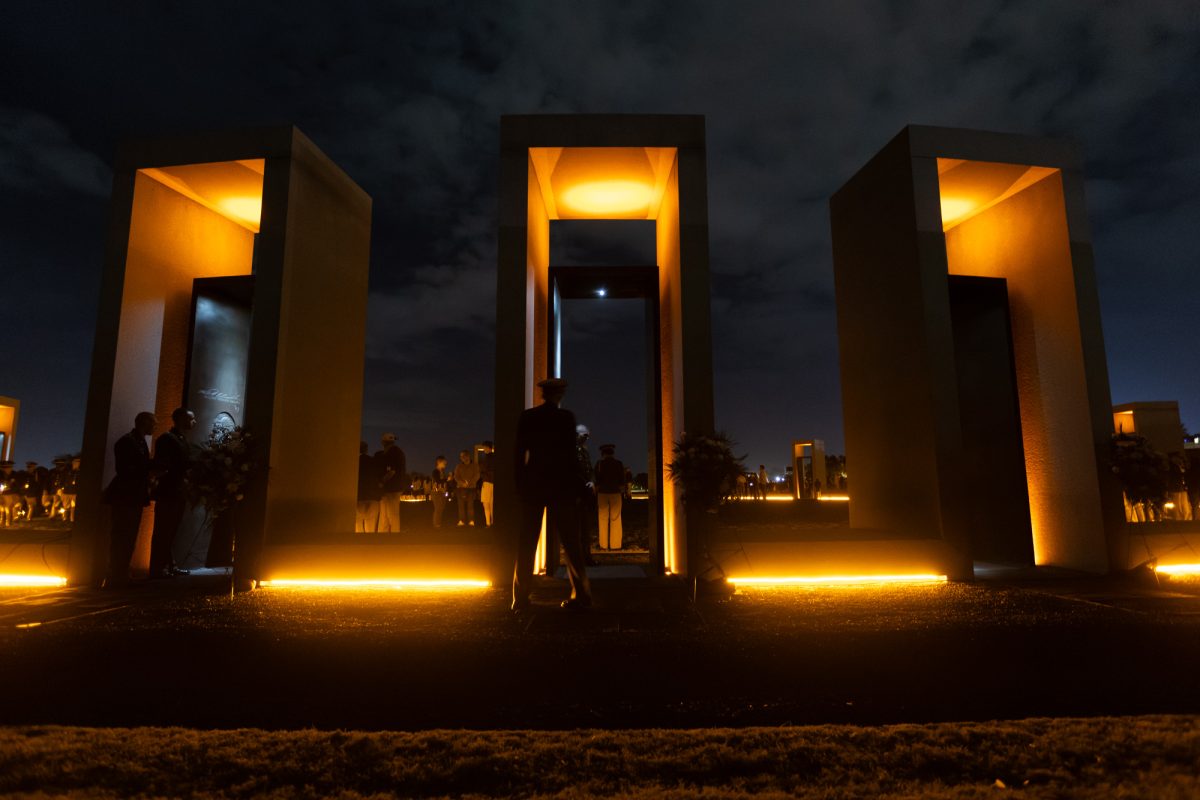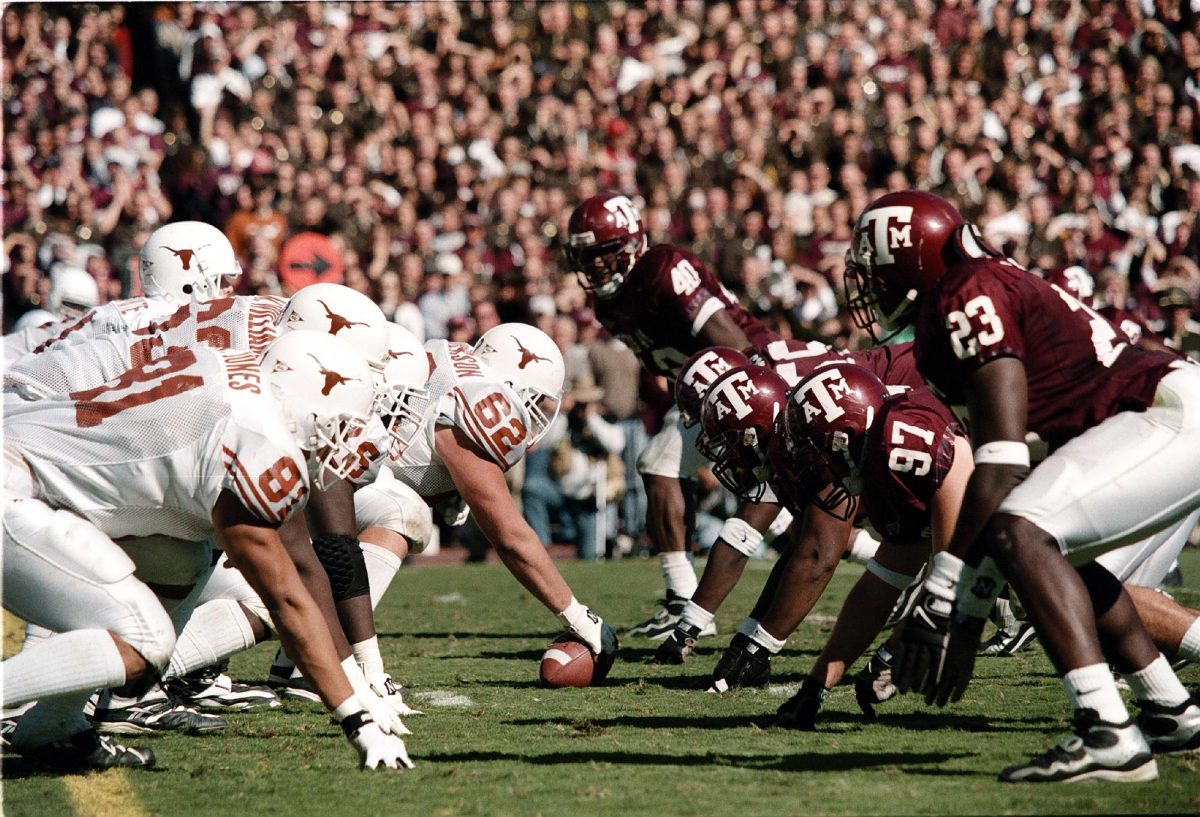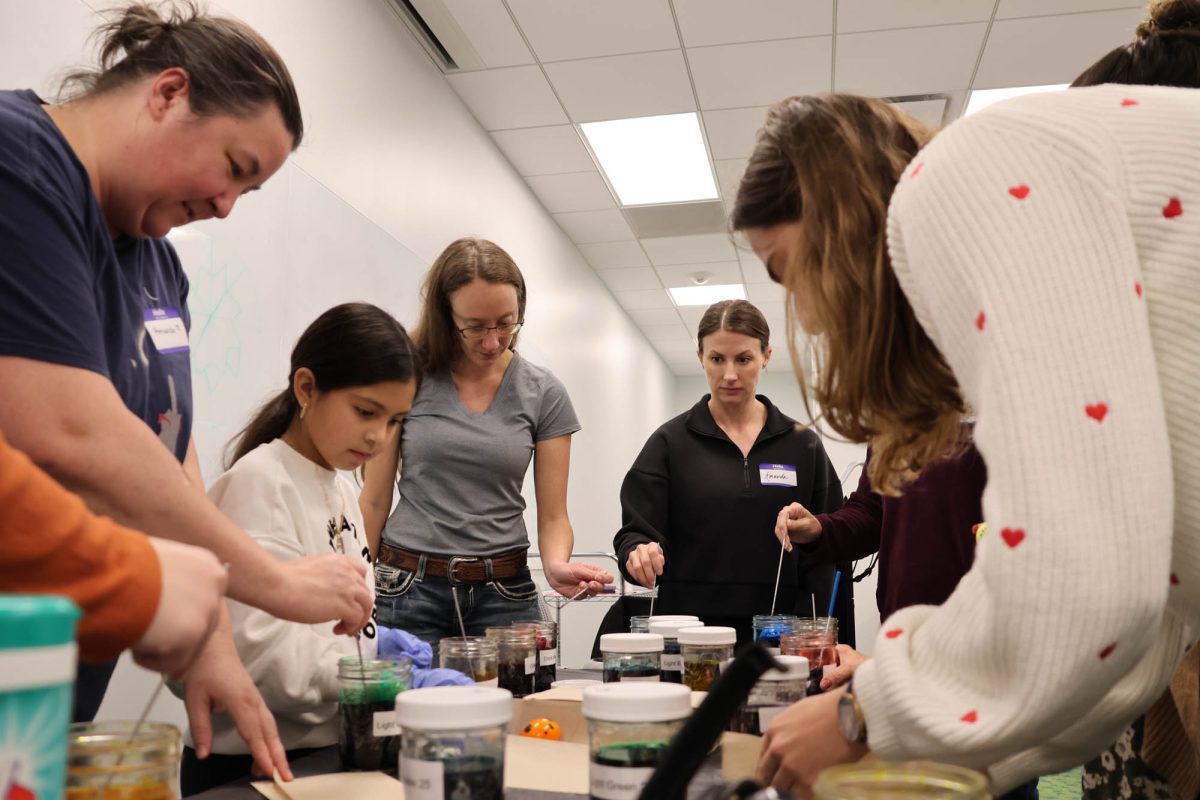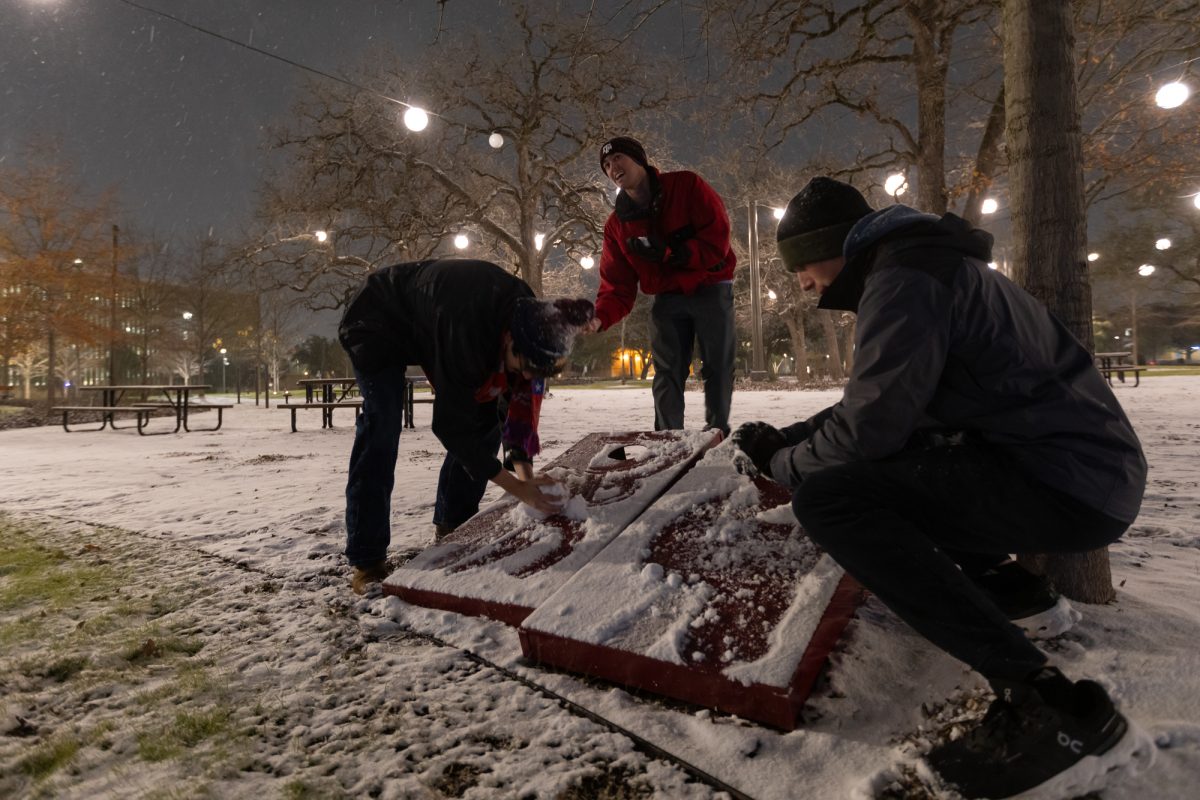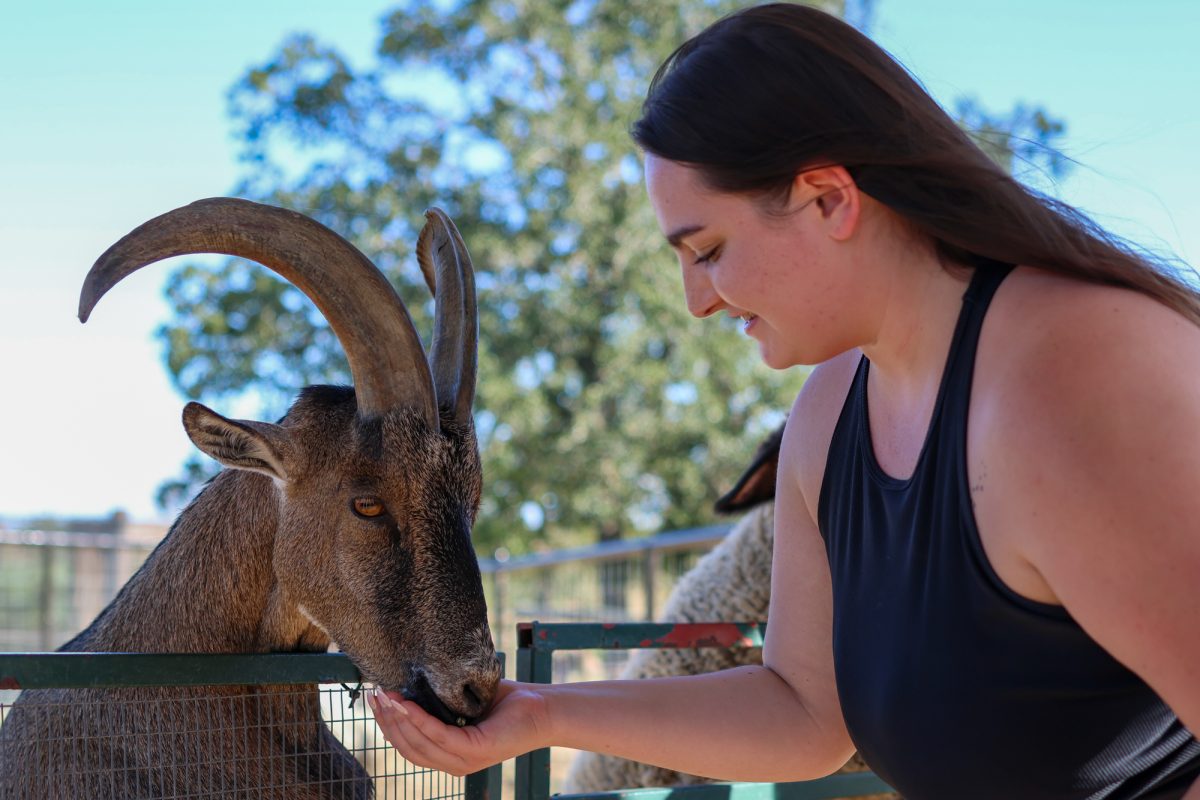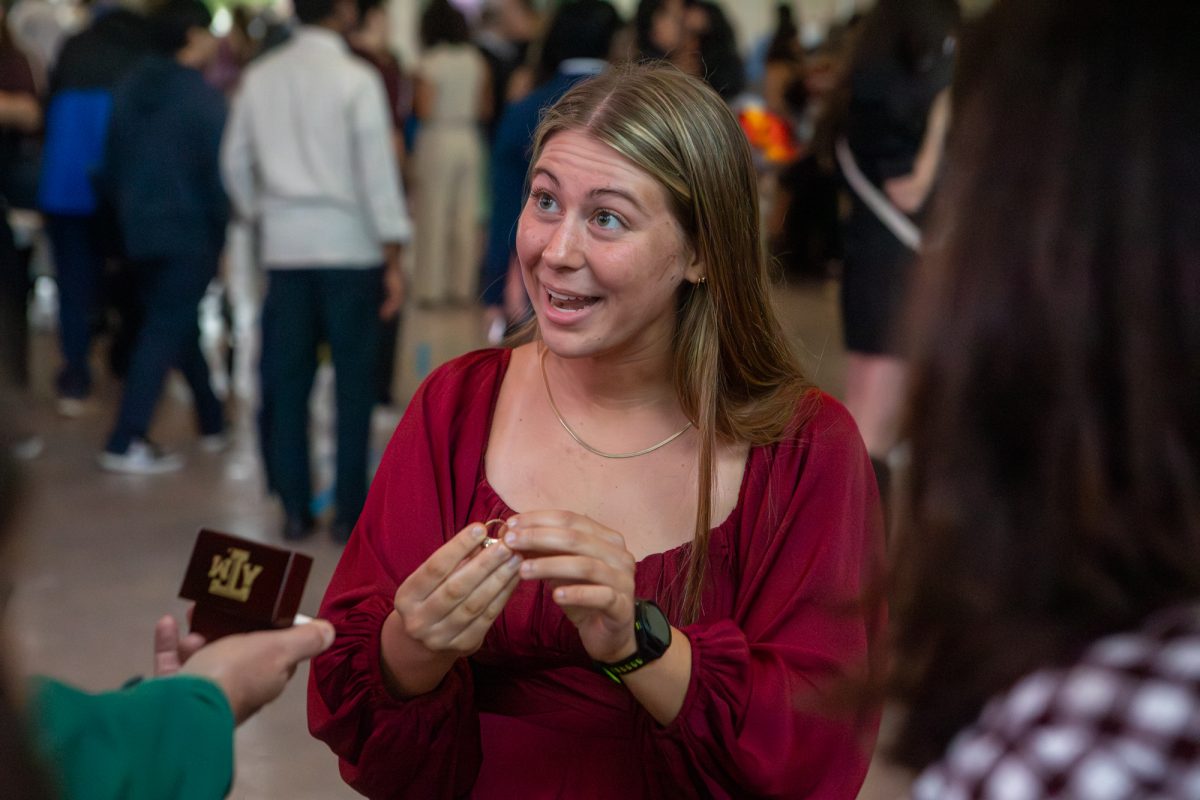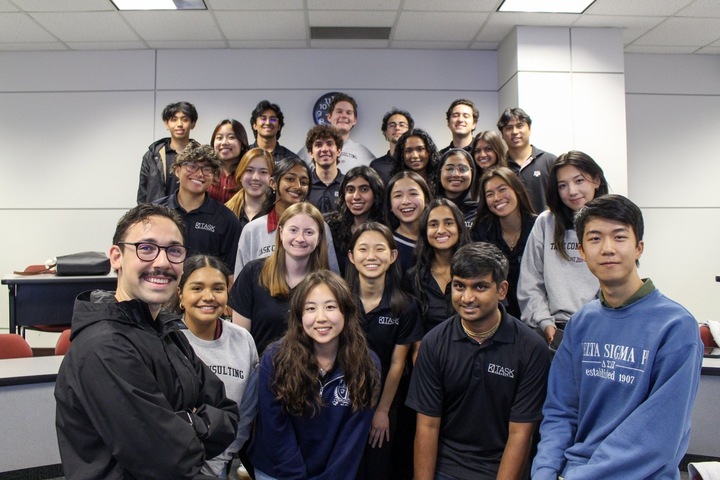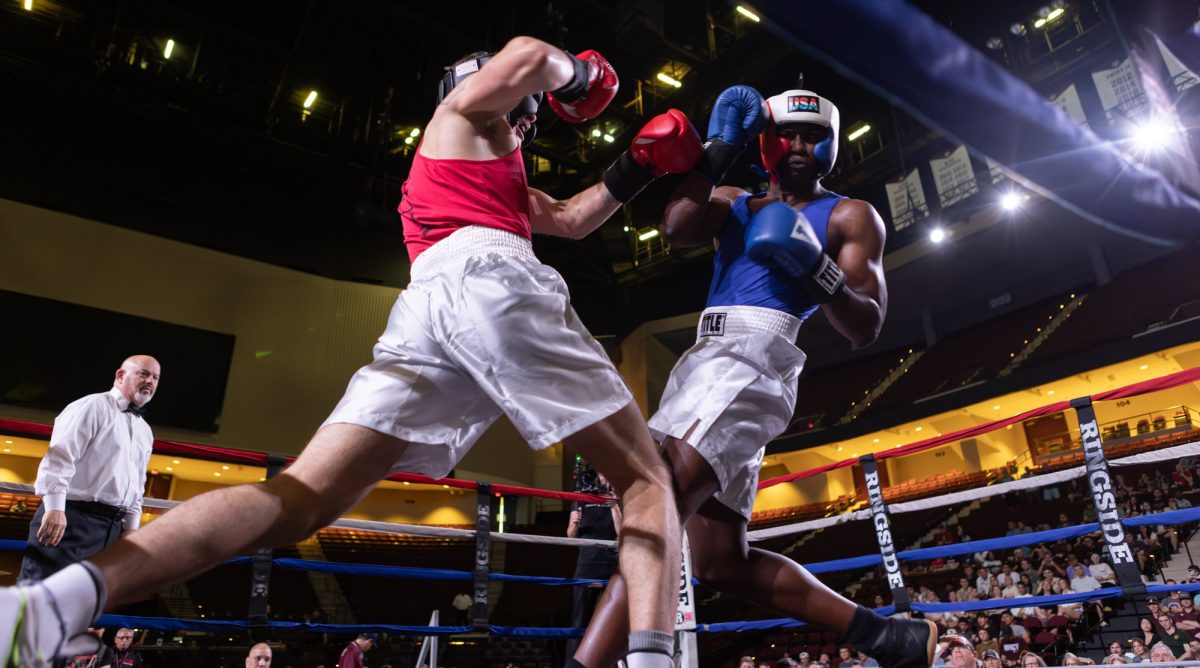Described as the “physical embodiment of the Aggie Spirit” by manufacturing and mechanical engineering technology senior and Senior Redpot Mason Taylor, the bright and blazing Student Bonfire returns Nov. 29. For several months, students have cut, built and prepared to once again torch the colossal structure and unite Aggies.
In September, the organization had its first Cut, where they “killed” trees to gather the necessary logs. Every weekend until late October, hundreds of students spent hours in the woods cutting down trees then constructing and working at the Stack site every night until Burn night, Nov. 29.
“It’s not some person who’s never out here putting in the work, giving the directions on it,” Taylor said. “It’s students who come out. They spend their time. They take time away from classes, time away from their families to be out here building this thing. It takes a ton of commitment. These are the best students at A&M. This is the 12th Man right here, and there’s nothing else like it.”
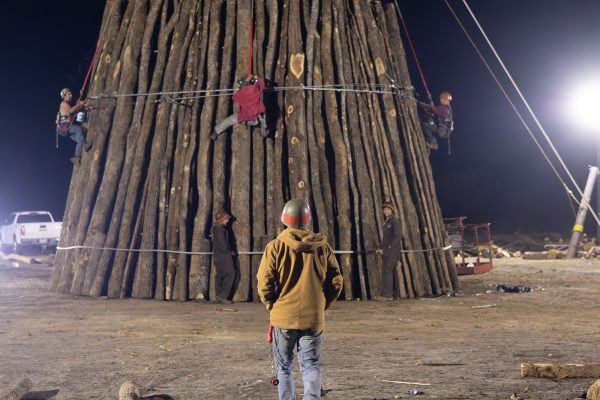
The only hours of the night the crews don’t build is Nov. 17, the Memorial Shift. Former Redpots guard the Stack so every participant may attend the Bonfire Memorial Ceremony to reflect and remember the fallen 12 when it collapsed on Nov. 18, 1999, at 2:42 a.m.
Although September is when Cut starts, that’s not necessarily when the process begins. On top of the current training for next year, the first step in the process for the next Bonfire begins in January after the previous Burn. The upcoming chiefs are trained, clean up the cut site, burn off scraps and no-good logs and prepare for the next year.
After burying a solid log — the center pole — 15 feet in the ground and four windle sticks 10 feet deep, the Stack is constructed of five tiers, wedding-cake style. Because each tier is cut according to the desired length, every log touches the ground. Greenpots, the female line under the Redpots within Bonfire Upper Leadership, train and decide who’s hooked up on swings to work on wiring together the logs they’ve “slammed” on that tier.
“Once we get out to these smaller tiers, it’s not so dangerous, so we start putting new chiefs and experienced people,” agricultural systems management junior and Junior Redpot Michael Branch said. “No fish or people we don’t trust go on the swings. That is a hard rule that we stick to because if you can’t get out of the way fast enough when a log’s coming up, you’re toast, like you are getting crushed by that log. So we always make sure we train these people properly before we set them up.”
Branch has been involved in Bonfire since his freshman year and was a chief last year. He was introduced to the organization by Taylor, who is in the same Corps of Cadets unit, Company B-2. Along with him are five other Junior Redpots who handle the day-to-day actions of Student Bonfire.
“I loved it,” Branch said. “ … I was actually in charge of the B-2 crew last year. And then they picked me up for Redpot, and I was like, ‘Heck yeah.’ I love this fire. And it’s never about the fire. It’s always about the people and the relationships you make in between.”
Bonfire is a labor of love for students involved, like Branch. From hearing a tree crack on the way down after swinging on a wedge to sleeping under the stars at Stack Site, tired from the lengthy workday, he said the commitment is rewarding — knowing at the end of the day, it’s for a cause.
“What’s also surprised me is, as a university grows, how many people forget about it and don’t understand that this is a tradition that goes back to the beginning of our university,” Branch said. “There’s some roots there that are starting to fall, and I just like to think that we’re making a difference bringing this tradition that’s literally centered.”
After A&M made Corps participation voluntary in 1965 and regular students — “non-regs” — were allowed to join Bonfire, crews became comprised of various dorm halls and the Corps. Students from all different walks of life are united through the “undying flame” with this diligent project.
With the tradition being started by students, it was shocking for them to hear the discussions earlier this year about the possibility of Bonfire returning to campus — except this time to be built by contractors and engineers instead of Aggies. Another reason there was backlash to the proposal is Bonfire being an outlet for students to get hands-on experience, managing and leading the whole operation.
“That Stack, the trees, all the ropes, the logs, that’s only half of it,” Branch said. “The rest of it is getting out here, doing everything by hand, holding everyone just together. It’s the relationships that we’ve made along the way. In the Corps, there’s this tension between Corps guys and non-regs … and here it doesn’t exist. … Honestly, it’s the people, it’s the process. Like all of that was done by hand. That was all built by people — by students.”
Standing 32 feet tall with the logs and 35 feet including the structure sitting on top of the center pole, the only thing altered about the Stack this year from past builds is the “t.u. frat house” outhouse painted a gaudy burnt orange.
As the Lone Star Showdown rivalry returns this year, the Corps members in the band — Orangepots — are in charge of building and painting the outhouse and installing it a few days shy of Burn. Purely their responsibility, they’re also the only people who know where the outhouse is located while they construct it.
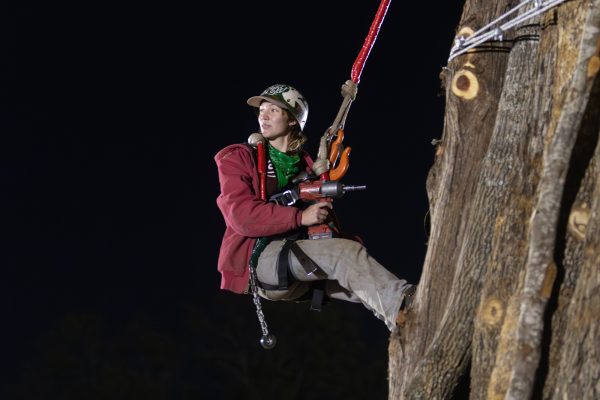
Also towards the end of the process, the organization has their “Dress Log Cut,” where each crew leaves their mark and has their own log slammed onto the fifth tier. Along with these logs are 12 more logs with the initials of the fallen Aggies from 1999 who died in the collapse. With members perched on top of the dorm logs, students will quickly wire and stack the logs one after another to accelerate the process.
“For Hell Week, that process is everything’s got to happen all at once,” civil engineering senior and Senior Redpot Jason Reynolds said. “We put our center pole in the ground. Then the very next morning we do our windles. The next day we do our dorm [dress] logs. So those will be the very last things that we stack. Those are the biggest logs that we have all season for each dorm and each crew has specific logs. And it’s pretty much their log that they get to show people at the end of the season. ‘This is our log for Stack.’”
After the Walton Hall crew usually hands off the torches to the Redpots, they’ll do a lap around the Stack with parents and families, and then another lap with their significant others. Once they get spread out and set, they’ll make a speech, then the eight Junior and Senior Redpots for this year will throw the torches onto the Stack. Around midnight, there will be a twist in the Stack due to how the superset cables and windles are set up, with airline cables keeping it from falling over.
Before dousing the Stack, they’ll dig a trench at the base that catches any runoff diesel. Considered an Old Army tradition, some members still throw their unwashed work clothes — called “grodes” — into the fire. After they “burn to build another,” it’ll burn down after about three days. They’ll then completely put it out, spread the embers out and let it cool down for a couple of weeks. In the spring, it’s another group effort from upper leadership and next season’s leadership prospects to clean it up.
“The Browns and the Greens who are new will help clean up as well,” Branch said. “We’ll pick up all the wire that’s in the base, and they’ll actually dig out where these poles that burn down to the ground, they dig out about halfway down the poles, they pull those out, and that’s what we make our donor gifts out of. So the donors for the previous year, they get a piece. They get a slice of the center pole that they helped build and provide for. So they’ll pull those out, they’ll rebury the holes and then they’ll start working to organize cleanups.”
From start to end to aftercare, different crews and leadership are trained to continuously work on various aspects of the tradition. Working through the frigid rain to the beaming Texas heat, all hours of the night into the day, thousands upon thousands of pounds of logs are slammed during this grueling but persevering process by determined Aggies.
“At the end of the day, as long as students are building it, it will always be Aggie Bonfire,” Reynolds said.
Bonfire is scheduled to burn Nov. 29, the night before the historic Texas game. Gates open at noon, and the torches will be lit at 8:40 p.m. With thousands expected, it’s encouraged to carpool. Food trucks and merchandise will be available.


